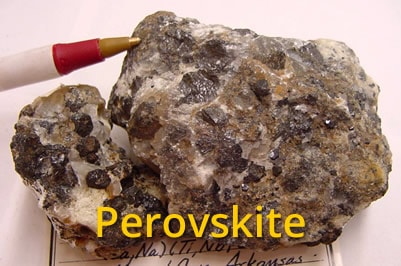Scientists the world over have been trying to create inexpensive, highly efficient solar cells out of perovskite, and this week some new research has come out which moves us another step in that direction. Perovskite degradation occurs rapidly when the naturally occurring mineral exposed to ambient air, which is quite the issue for a solar cell. According to the NREL team,Researchers at the U.S. Department of Energy’s National Renewable Energy Laboratory (NREL) have manufactured an environmentally stable, high-efficiency perovskite solar cell. Another step closer to commercial sale of perovskite solar cells!
Perovskite Degradation and the NREL Research

CleanTechnica have written an article about the NREL Research on perovskite deterioration in ambient air and are reporting that the research team have successfully tested a perovskite solar cell in ambient conditions with no protection for 1,000 hours – with a fantastic result that 94% of conversion efficiency was retained.
The scope of the research is a little over our head, but if you’re interested in learning more about the study “Tailored Interfaces of Unencapsulated Perovskite Solar Cells for >1000 Hours of Ambient Operational Stability” you can click the link to read about it via Nature magazine.
In simplest form, previous methods of protecting the perovskite have focused on creating a protective enclosure around the solar cell. Instead of that, they focused on the ‘weakest link’ in a perovskite solar cell and replaced it with a different molecule.
“Each interface and contact layer throughout the device stack plays an important role in the overall stability which, when appropriately modified, yields devices in which both the initial rapid decay (often termed burn-in) and the gradual slower decay are suppressed.”
Perovskite research is moving along at a fantastic clip. Here are some other updates on this technology we’re really excited about:
- We’ve previously reported on Poland based Saule Technologies, who signed a distribution agreement with the Skanska group to roll out perovskite solar panels in Poland in 2018.
- Greatcell Solar were awarded a $6m grant for perovskite solar cell research by the Australian Renewable Energy Agency
- A collaboration between the Ulsan National Institute of Science and Technology and the Korean Research Institute of Chemical Technology has resulted in a hybrid organic/inorganic perovskite solar cell with 21.2% efficiency being created.

